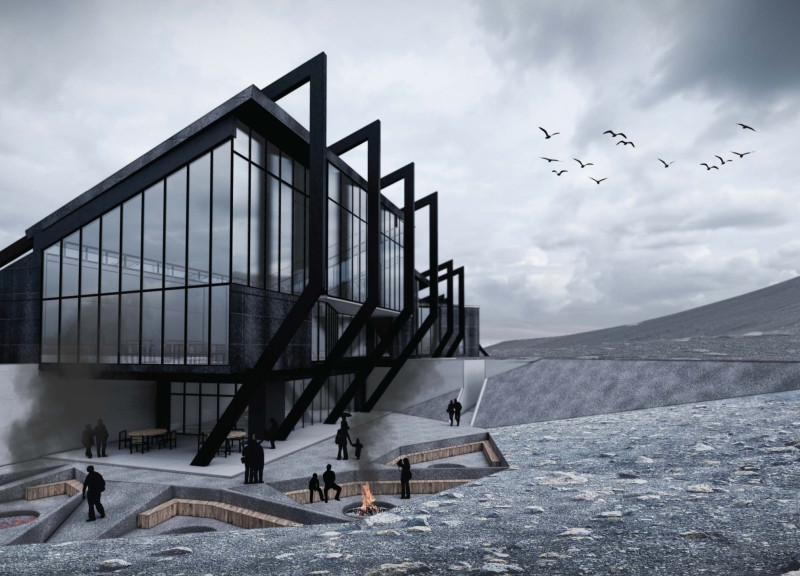5 key facts about this project
The Klofin Jörð Kaffihús is situated in Iceland, an area known for its remarkable geothermal activity and striking geological features. It serves as a coffee house, providing a welcoming space for visitors while reflecting the unique characteristics of its environment. The design is centered around the idea of a "Crater" patio that faces east, allowing sunlight to pour in during the morning hours. This orientation connects visitors to the natural surroundings and highlights the beauty of the landscape.
Structural System
A strong steel framework is used for the building, ensuring that it can withstand the common volcanic eruptions and earthquakes in the region. This choice of material supports the varied elevations and spatial arrangements, contributing to a lively atmosphere. The layout includes a "Split" in levels that mimics the geological fissures found in the earth, encouraging people to explore and interact with the space.
Materiality and Performance
The building makes use of structurally insulated panels and steel-plated rain screen cladding. This combination enhances comfort and protects against the local climate while giving the structure a distinct visual identity. By using these materials, the design aims to be efficient in energy use and effective in maintaining a comfortable environment for patrons.
Geothermal Integration
A closed-loop geothermal heating system is part of the design. This system captures natural heat and distributes it through a series of hot pipes in the foundation and floors. This approach reduces energy consumption and shows a commitment to sustainability. As a result, the coffee house remains warm and inviting, keeping in line with environmentally friendly practices.
Inside, the layout supports a range of activities. Spaces for visitor information, coat checks, and exhibits are thoughtfully arranged, along with outdoor seating that takes advantage of views of Lake Myvatn and the nearby volcano Hverfjall. The overall design creates an experience where architectural forms reflect the natural landscape, helping visitors feel connected to the beautiful scenery around them.






















































